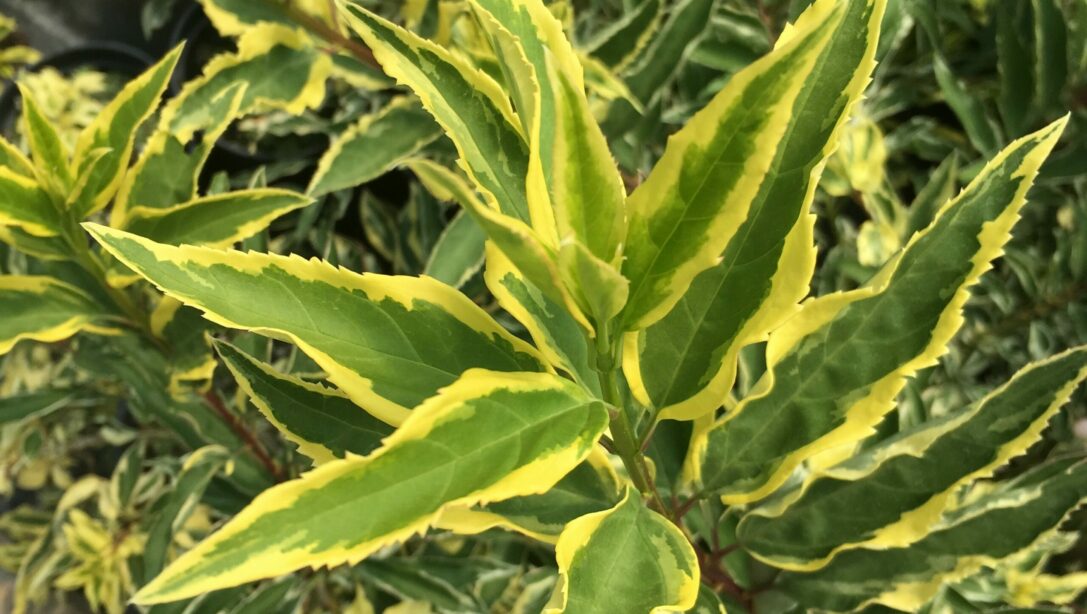This new cultivar of Forsythia is exclusive to Hillier Garden Centres. Discovered in the garden of John Mitchell 15 years ago, this striking plant was initially propagated from a single 15cm twig before cuttings were taken from this mother plant to grow on. This new variety boasts distinctive creamy-yellow margined foliage, a strong upright habit and bears a profusion of bright yellow flowers in early spring.
John Mitchell was a first officer in the UK merchant navy and his love was the sea, with one of his last ships being RSS ‘Discovery’ so an apt name for this Forsythia variation. This uniquely striking plant is sure to be a talking point wherever it is situated. John was sadly diagnosed with dementia in 2011 and died two years later.
Fact File

Sun requirements: Full sun to light shade
Soil: Most soils
Hardiness: Fully hardy
Size: Grows to 2.5m height x 2m spread
Growing Guide
Planting
Dig a hole twice the size of the pot the plant is in and add a mixture of multi purpose compost and the soil you just dug out in the bottom of the hole.
Then position the plant so the top of the root ball is level with the top of the hole. Fill around with more compost/soil mixture and firm it in. Cover the root ball and firm in well to ensure there are no air pockets around the root ball which could cause it to dry out
Water the plant and surrounding area thoroughly. It may take more water than you think to soak down, you need to water the whole root ball thoroughly rather than wetting the surface. You may want to also add a layer of mulch such as bark to help prevent water evaporation and stop weeds from growing.
Watering
Once the Forsythia is planted, provide generous watering to help it establish a strong root system. You can support strong flowering especially in those dry spells by checking the soil, just the top inch and if it feels dry, it’s time to water. Deep infrequent watering will encourage deep root growth. Apply mulch around the base of the shrub and it will help with retaining soil moisture and temperature. Ensure to avoid overwatering as it can lead to root rot. As time goes on the water requirements change as they establish their roots, making it a low maintenance shrub.
Pruning
Pruning should be done after flowering in the spring to keep growth in check and encourage a bushier habit. This is because Forsythia will flower on last season’s wood. Avoid pruning back hard in the autumn or you’ll get no flowers next spring.
After a spring prune, mature Forsythia will put on two or three feet of fresh growth which will flower the following year.





